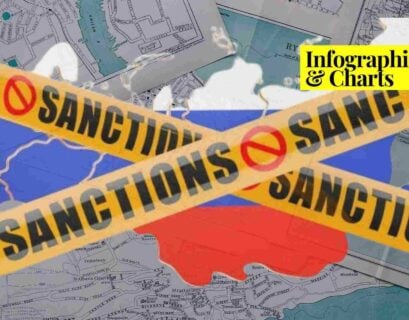Ms Seemal Nadeem is studying public policy at NUST.
On 22nd August 2022, the United States and South Korea launched their joint military exercises – otherwise known as the Ulchi Freedom Shield – against North Korea. The event occurred after North Korea rejected South Korea’s proposal to get economic benefits and aid in return for denuclearization. In this article, the author explores what military drills are and why this most recent US-South Korea drill is important.
What are Military Drills?
Military drills or exercises, in the modern sense, date back to the Greeks and they have been a common military practice throughout history. A military exercise is a type of training for military officials where they rehearse and practice prescribed movements as they would be required to do in actual times of combat.
The military actively employs resources to simulate real and full-scale circumstances of the battleground – an attempt to reproduce the conflict. The purpose is to analyze the outcomes of war strategies, wartime decisions, battle formations, and the effects of weapons. It prepares the soldiers psychologically as well as develops a sense of self-control, instinctive responses, discipline, and understanding of a leader’s commands.
America & the Two Koreas
Since the Korean War, North and South Korea—two halves of the same nation but utter opposites—have been on their toes ready to attack or defend against each other. Both armies are capable of potentially killing thousands of civilians just across the mountains. After the end of the Korean War in 1953, the US allied with South Korea mainly because it wanted to prevent a communist state (North Korea) from conquesting an independent state (South Korea).
The US has since taken different approaches toward both of the states, like day and night – just as different as their political ideologies. South Korea and the US formed a bilateral military alliance based on the US-South Korea mutual defense treaty which stated that the US would come to assist South Korea if it faced an external attack. In return, South Korea allowed the placement of American troops and resources in its territory.
On the other hand, there were no diplomatic ties between North Korea (the Democratic People’s Republic of Korea or DPRK) and the US, and relations remain hostile; they have in fact worsened since 2017 after North Korea conducted a series of nuclear and missile tests that showed the country’s ability to launch missiles beyond its region and that its capabilities were growing at a rate faster than what the US expected.
Intimidating North Korea
The allies launched military exercises after the end of the first Korean War and they have continued to do so till the present times. However, the US faced political and cultural resistance to conducting these exercises, but it did not stop them from showcasing a combined posture against North Korea.
These exercises have both a military and a political intent. The military intent is, of course, to show North Korea that the allies are prepared and capable to fight in the battleground in order to counter its military expansion. And the political message is that the alliance still stands strong to protect South Korea and stand together as a symbol of combined interests, solidarity, and support.
The allies conducted annual joint military exercises as a tactic to intimidate North Korea. Then in 2019, US President Donald Trump became the first president to step into North Korea and held meetings with Kim Jong-un, the leader of North Korea. Trump had decided to resume the stalled nuclear talks and said that they would resume “within weeks.”
However, despite their meetings, they could not reach a conclusion on North Korea’s denuclearization; there was little to no progress despite these historic events. The talks ended without any formal agreement but it was decided they would continue these negotiations.
The plan for military exercises was revised and the two allies (the US and South Korea) said they would instead carry out “adjusted outside maneuver training and united command exercises to continue firm military readiness.” In light of these diplomatic talks and to ease tensions between the states, the allies “adjusted” their exercises for 2019 and scaled them down due to Covid-19 in the following years.
Current Situation
Despite the efforts to denuclearize North Korea, this year North Korea conducted a record-breaking series of nuclear tests which included firing an intercontinental ballistic missile at full range. There have been reports that DPRK will go ahead with its seventh nuclear test as well and is already preparing for it. Despite isolation from many countries, DPRK also threatened that it was ready to mobilize its nuclear capabilities in any war.
In response to the threats, the South proposed a deal to the North that it would offer economic assistance and aid in food, energy, and infrastructure in return for the abandonment of the North’s nuclear program. The North dismissed the proposal without hesitation and slammed it by saying that this plan is the “height of absurdity,” and “childish”; they also dismissed any chances of face-to-face talks.
The hostility by the North was not taken lightly and it was followed by the launch of the US-South Korea joint military exercises on 22nd August 2022. These exercises have been renamed Ulchi Freedom Shield. The South Korean President, Yoon Suk-yeol stated that the joint exercises will be “normalized” to heighten deterrence against North Korea.
Ulchi Freedom Shield
We are seeing the largest joint military exercise since 2017, after which the exercises were downsized to make room for the Trump administration’s diplomacy and Covid-19 concerns. The allies are planning to stage 11 field training programs and one of them will be at the brigade level which means that it will involve thousands of soldiers.
The Ulchi Freedom Shield will involve tanks, warships, and aircrafts, with approximately tens of thousands of troops. It started with a 4-day civil defense training program which was led by South Korean government employees, and it is reported that the exercises will include the simulation of joint attacks, the removals of mass destruction, and reinforcements of arms and fuel.
The forces will also train for new developments in warfare, including the drone attacks that were shown during the Russia-Ukraine conflict. Reports say that officers will also practice joint military-civilian responses to attacks on industrial facilities, airports, and seaports. The allies describe these events as defensive measures but the North views them as rehearsals to invade them.
What Does This Mean?
Looking at the show of power, the North believes that it is completely justified to develop its nuclear weaponry and missile development. When the training began, North Korea fired two cruise missiles from the West coast. These acts of hostility are to have great implications for the region. North Korea has already made threats against the allies saying that they would face “unprecedented” security challenges if they do not stop their pressure campaign, which includes the joint military drill.
South Korea’s capital has taken an initiative to improve its missile detection technologies to strengthen its defense. Experts say that the North’s heightened nuclear activity has ulterior motives. North Korea wants to pressurize the US to accept it as a nuclear power, to legitimize it so that it can use it as leverage to negotiate security and economic agreements from a position of strength.
There is a great possibility for this analysis to stand because Kim Jong-un vowed to increase its nuclear deterrence after the US rejected North Korea’s demand to lift sanctions in return for partially surrendering its nuclear capabilities. There remains a great deal of pressure among the three states, now more than ever, because both sides are displaying an enormous show of strength, dialogue is off the table, and tensions are high. The implications of these events can already be seen as states increasingly securitizing themselves, but it is unsure how this will unfold in the future.
If you want to submit your articles and/or research papers, please check the Submissions page.
The views and opinions expressed in this article/paper are the author’s own and do not necessarily reflect the editorial position of Paradigm Shift.



















